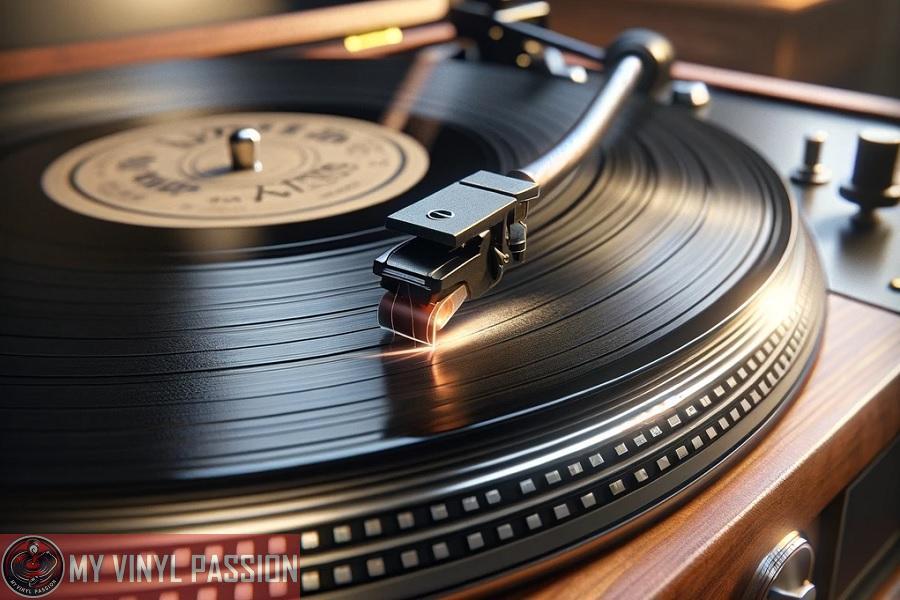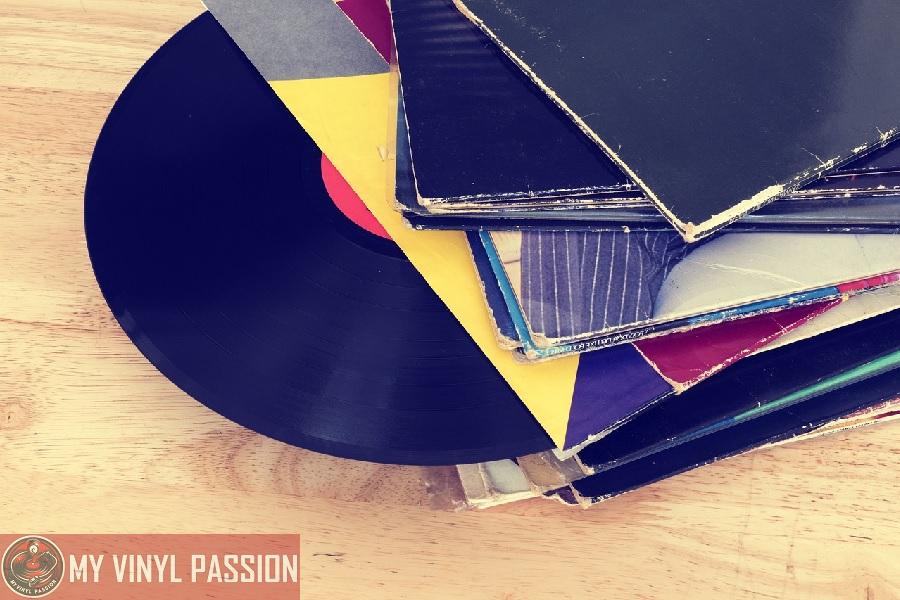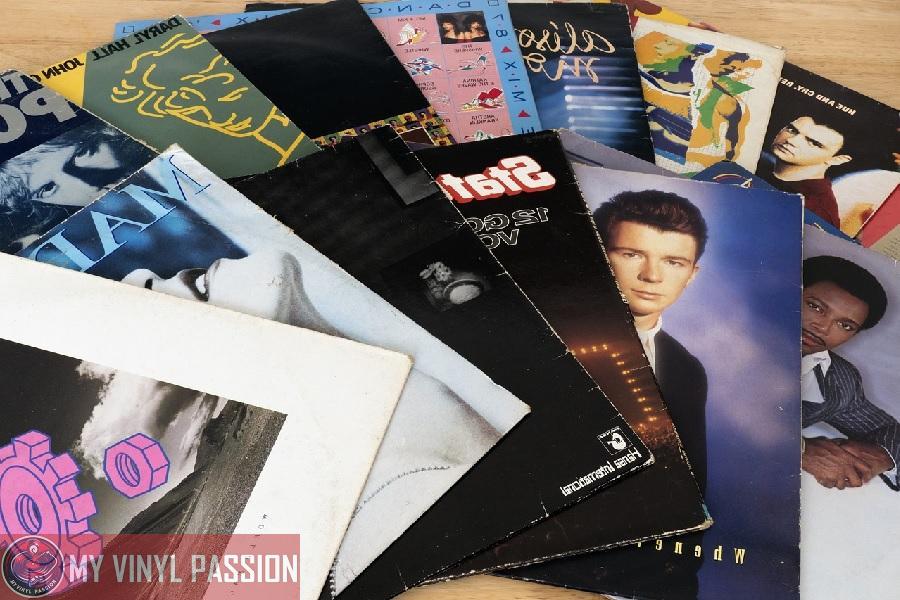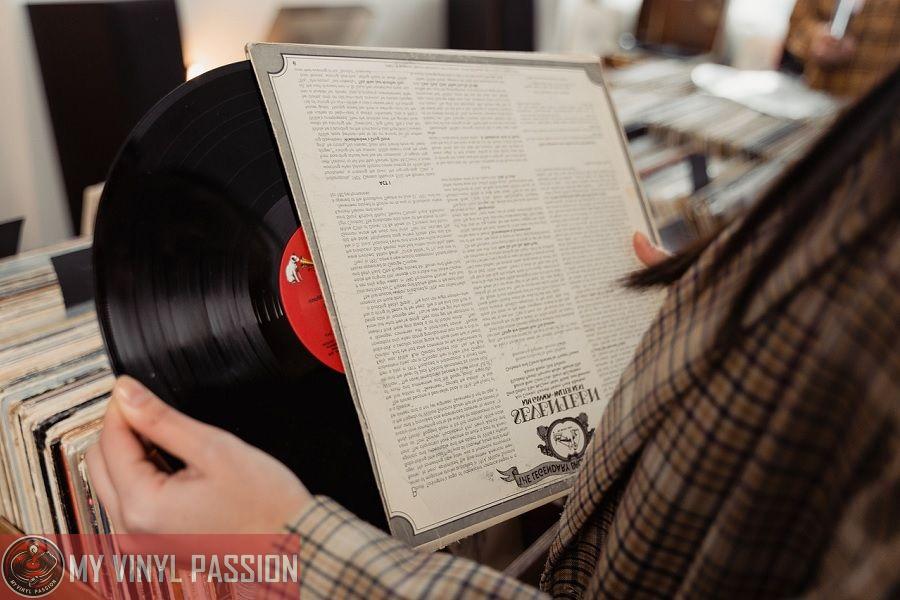When you place a vinyl record onto your turntable, anticipating the rich, warm sound that vinyl is renowned for, it can be quite frustrating to encounter a skip, especially if it occurs repeatedly in the same spot.
Skips can diminish your listening experience, interrupting the flow of music with jarring jumps in the sound. Understanding why your record is skipping can help you address the issue effectively.
In Summary
Dirt or Damage: A common cause for a vinyl record skipping in the same spot is dirt or physical damage on the record’s surface at that particular point.
Needle Issues: A worn-out or damaged needle (stylus) can also lead to skipping, especially if it’s unable to properly track the record’s grooves.
Improper Weight Balance: Incorrect setting of the tonearm weight or anti-skating adjustment on the turntable can result in the needle skipping over the same spot.
Warped Record: A vinyl record that is warped may cause the needle to skip at certain points where the warping is most pronounced.
Common reasons for a record to skip include dust, dirt, or scratches on the record’s surface.
Even small particles can affect the needle’s path, causing it to jump out of the groove. Regular cleaning and careful handling of your vinyl can prevent this from happening.
In some cases, the issue may lie with the turntable itself, such as improper tonearm balance or a worn-out stylus that fails to track the grooves accurately.
Should your vinyl record persist in skipping, it’s a clear signal that something specific needs your attention.
Solving the mystery is key to restoring your listening pleasure and preserving the longevity of your vinyl collection.
Whether it’s a cleaning issue, a problem with the turntable, or damage to the record, identifying and addressing the cause of the skipping ensures that you continue to enjoy your music without interruption.
Understanding Vinyl Records and Skipping
When you play a vinyl record, the intricate interplay between the record’s grooves and the turntable’s needle dictates the quality of the sound. Skips or jumps in the playback disrupt this experience, often hinting at underlying issues with the record or the player itself.
Anatomy of a Vinyl Record
A vinyl record is crafted with fine grooves that spiral from the edge to the center. These grooves are microscopic pathways that capture the sound.
The stylus, or needle, sits within these grooves as it travels, picked up by the cartridge attached to the tonearm. Precise alignment is key, as the stylus needs to trace the grooves accurately to convert the physical motion into the audio you hear.
Common Causes of Skipping
Skipping occurs for several reasons, often due to tangible problems with the vinyl record or the playback system. Here are some common causes:
- Dust and Debris: Accumulation of particles in the grooves can lift the stylus, leading to skips. Regular cleaning to remove dust is essential.
- Scratches: Visible marks on the vinyl can cause the needle to jump out of the groove.
- Warped Records: Heat or pressure can distort a record’s shape, preventing the stylus from smoothly following the groove.
- Static Electricity: Can attract dust and cause unexpected skipping.
- Damaged Stylus or Tonearm: Worn out or improperly set up needle or tonearm can misread the grooves.
Each part of your turntable setup, from the cartridge to the groove itself, plays a role in ensuring a skip-free listening experience. Regular maintenance and careful handling of both your records and equipment are the best defenses against skipping.
Maintaining Your Vinyl Records
Proper upkeep of your vinyl records is crucial in preserving their quality and preventing issues like consistent skipping. Effective cleaning and correct storage are foundational to extending the life and performance of your record collection.
Cleaning Best Practices
Begin the cleaning process by using an anti-static brush to remove surface dust. Gently glide a carbon fiber brush across your record to reduce static and dislodge fine particles.
To tackle more ingrained dirt, apply a cleaning solution designed for vinyl or use distilled water to clean your records. It’s important to avoid tap water due to potential minerals and chemicals that can harm the vinyl.
- Step 1: Gently remove surface dust with a carbon fiber brush.
- Step 2: For a deeper clean, dilute a small amount of record cleaning solution with distilled water.
- Step 3: Use a soft, lint-free cloth to apply the mixture in a circular motion, parallel to the grooves.
- Step 4: Carefully rinse with distilled water, if necessary.
- Step 5: Allow the record to air dry completely before playing or storing.
Storage and Handling
Handling your records with care is just as essential as cleaning. Always hold the edges or the label to prevent oils from your hands contaminating the grooves. Store your records vertically in a cool, dry place to prevent warping and damage.
Replace paper sleeves with anti-static inner sleeves to safeguard against dust and static build-up.
- Record Handling:
- Do: Hold by the edges or label only.
- Don’t: Touch the surface with your fingers.
- Record Storage:
- Orientation: Store records vertically.
- Environment: Keep in a cool, dry place away from direct sunlight.
- Sleeves: Use anti-static inner sleeves instead of standard paper ones.
Proper maintenance is the key to enjoying the full auditory experience an audiophile seeks. Keep your records clean and well-stored, and you’ll ensure their longevity and pristine sound.
Turntable Setup and Calibration
Ensuring your turntable is correctly set up and calibrated is essential to prevent vinyl records from skipping. Follow these precise adjustments to maintain optimal playback quality.
Adjusting the Tracking Force
The tracking force is the amount of weight applied by the stylus onto the record. It’s crucial for you to set this properly, as too much force can cause damage to both the vinyl and the stylus, while too little can lead to skipping.
Adjust the tracking force by turning the counterweight at the back of the tonearm until you achieve the manufacturer’s recommended Vertical Tracking Force (VTF). Use a precise scale for accuracy.
Setting the Anti-Skating
Anti-skating is a feature that counteracts the natural force pushing the tonearm towards the centre of the record, ensuring even stylus wear and consistent sound quality.
To set the anti-skating, locate the anti-skating control near the base of the tonearm. Set it to the same value as your tracking force to maintain equal pressure across the groove of the record.
Balancing the Tonearm
Before you adjust the tracking force, ensure the tonearm is properly balanced. Start by freeing the tonearm and carefully moving the counterweight until the tonearm floats horizontally.
This state of equilibrium is where you want to start when setting your tracking force. Once balanced, use a stylus brush regularly to keep your stylus clean and ensure that the record weight is optimal to prevent accidental skips from environmental factors.
Troubleshooting Skips and Warps
Vinyl records deliver rich sound quality, but issues like warps and skips can detract from your listening experience. This section will guide you in identifying and rectifying these common vinyl problems.
Identifying Warped Records
Warped records can occur due to heat exposure or improper storage. To identify a warped record, place it on your turntable and observe as it spins.
If you notice an up-and-down wobble or deviations in the record’s flatness, you likely have a record warp. Inspecting your records in a well-lit room will help you spot any warping that might cause a skipping record.
Dealing with Skips
Skips in your records can be caused by a variety of factors including dust accumulation, scratches, or even the environment. To address record skipping, start by ensuring your player is on a stable, even surface to reduce vibrations.
Clean your records thoroughly with a soft, anti-static brush to remove any debris. If the record player skipping persists, inspect the needle for damage, as it might be the reason why your record is skipping.
Aligning it properly and ensuring the correct tracking weight will also help minimize record skips. Remember that speakers should be placed away from the turntable to prevent vibration interference.
Beyond the Basics
When your vinyl record skips in the same spot, it’s essential to understand the finer points that go beyond just cleaning the disc. This section will help you enhance the sound quality of your records and provide guidance on caring for your record player to prevent damage.
Enhancing Sound Quality
To improve the audio fidelity of your vinyl, start by inspecting the record for any physical damage. Even minor scratches can greatly impact sound quality, causing skips or distortions.
Store your records vertically and in a cool, dry place to avoid heat-related warping. Utilize inner sleeves that reduce static electricity, a common culprit of dust accumulation and playback issues.
If you’re part of a record collector community or shop platforms , consider investing in a high-quality stylus. It’s worth noting that the use of a damaged or worn stylus can exacerbate skipping problems and harm your records.
Caring for Your Record Player
Regular maintenance of your record player is critical in preventing damage to the record and preserving the artwork and aesthetic value of your collection. Follow these steps:
- Balance the Tonearm: An improperly balanced tonearm exerts uneven pressure, leading to skips. Adjust the counterweight until the arm floats parallel to the platter.
- Replace Worn Components: Periodically check and replace the stylus and belts, as worn parts can affect playback quality.
- Clean Regularly: Use a soft, anti-static brush to gently remove dust from the stylus before and after each use. Additionally, cleaning the platter and other components of the record player can prevent buildup that might lead to skips.
Remember, careful attention to both the records and the player itself can significantly improve your listening experience and protect your valued collection from damaged records and distorted sound.
FAQs
Why does my vinyl record skip in the same spot every time?
Skips in the same spot are often due to dirt, scratches, or damage on the record’s surface at that particular point, affecting the needle’s ability to track the grooves properly.
Can a dirty needle cause my record to skip?
Yes, a dirty or damaged needle can lead to skipping. Regular cleaning and timely replacement of the stylus are important to maintain good playback quality.
How do I fix a vinyl record that skips?
Clean the record thoroughly to remove any dirt or debris. If the issue persists, check the turntable’s tonearm setup, including weight balance and anti-skating adjustments.
Could the problem be with my turntable instead of the record?
Yes, turntable issues like improper tonearm balance, a worn-out needle, or incorrect anti-skating settings can cause a record to skip in the same spot.
Is it possible to repair a scratched vinyl record that skips?
Minor scratches can sometimes be mitigated with careful cleaning, but deep scratches often cannot be repaired effectively, and the record may need to be replaced.





